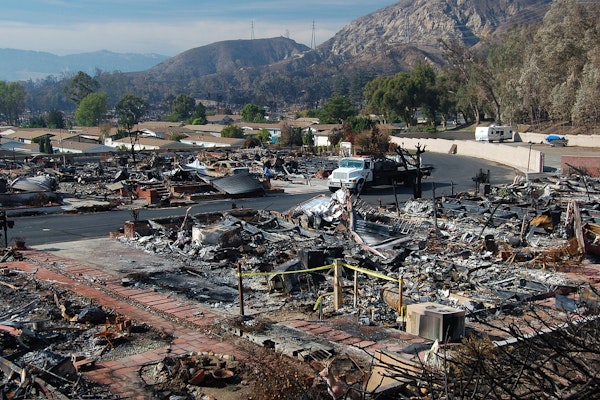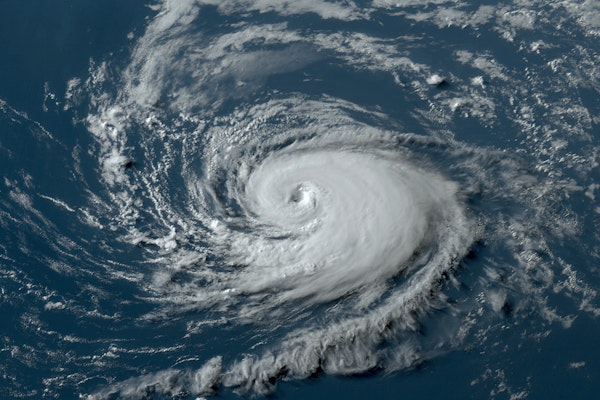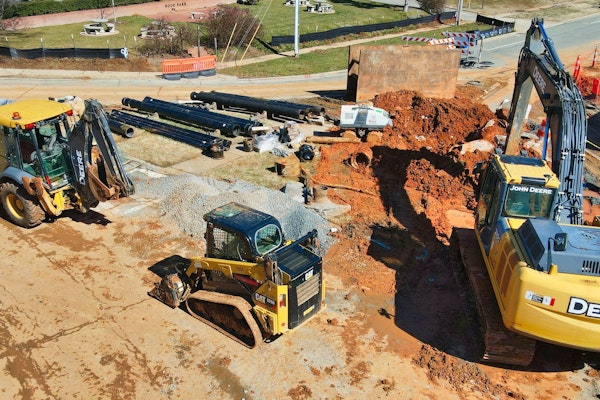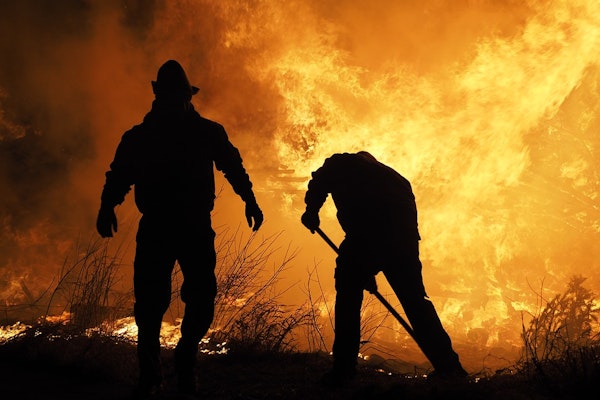
California Wildfire Devastates Communities and Strains Insurance Market
One of California’s worst wildfires of 2025 highlights growing challenges in the state’s insurance market, sparking debate over reforms and recovery efforts.
September 29
Catastrophe
Insurance Industry
Legislation & Regulation
Property
California

Wildfire Study Finds Structure Spacing and Home Hardening Significantly Reduce Losses
New research analyzing five major California wildfires finds that defensible space and home hardening measures can reduce structural losses by up to 48 percent.
September 26
Catastrophe
Insurance Industry
Property
Risk Management
California

Why Climate Adaptation Is Becoming a Strategic Priority for Risk Managers in 2025
Marsh’s 2025 Climate Adaptation Survey reveals that while most businesses are assessing future climate risks, many still lack funding, strategy, or data to drive resilient action.
September 22
Catastrophe
Insurance Industry
Property
Risk Management

Wildfire Smoke Projected to Drive Major Health and Economic Losses by 2050
A pair of studies warn that wildfire smoke could cause over 71,000 U.S. deaths annually by 2050 and cost the economy $608 billion a year if emissions remain high.
September 22
Catastrophe
Legislation & Regulation
Life & Health
Risk Management

Property Insurance Claims Continue Three-Year Decline in Q2 2025, Verisk Reports
Verisk’s Q2 2025 report shows a 9.6% year-over-year decline in property claims, driven by fewer non-CAT losses despite a quarterly rise in wind and hail-related events.
September 22
Catastrophe
Fraud
Insurance Industry
Property

Man Dies After Losing Consciousness on Stardust Racers Ride at Universal’s Epic Universe
A man in his 30s died after becoming unresponsive on the Stardust Racers ride at Universal’s Epic Universe. The attraction remains closed amid an ongoing investigation.
September 18
Catastrophe
Legislation & Regulation
Liability
Risk Management
Florida

Global Risk Crisis Intensifies as Economic, Climate, and Cyber Threats Intersect
Economic uncertainty, climate change, and cybersecurity threats are compounding risk exposure across industries, creating a fast-evolving and interdependent crisis for insurers.
September 17
Catastrophe
Insurance Industry
Risk Management
Technology

Homebuyers Shift Search Strategies As Homeowners Insurance Costs Rise And Access Challenges Grow
A new Realtor.com survey shows rising homeowners insurance costs are influencing homebuyers’ decisions, with many adjusting search strategies or considering dropping coverage.
September 12
Catastrophe
Insurance Industry
Property
Risk Management

Federal Disaster Aid Approvals Are Taking Longer And Delaying Recovery Efforts
A new AP analysis shows presidential disaster declarations now take weeks longer than in past decades, leaving survivors and local governments waiting for critical aid.
September 12
Catastrophe
Legislation & Regulation
Property
Risk Management

Why the Atlantic Hurricane Season Has Suddenly Gone Quiet in September
Despite reaching the statistical peak of hurricane season, the Atlantic basin is unusually quiet this September, with no active storms and limited tropical development expected.
September 10
Catastrophe
Insurance Industry
Property
Risk Management
Florida
Georgia
North Carolina
Tennessee
Texas

How Construction Companies Can Prevent Common Builders Risk Claims
Construction projects face risks from theft, weather, fire, and more. Proactive site safety measures can reduce losses and keep projects on track.
September 9
Catastrophe
Insurance Industry
Property
Risk Management

High Insurance Costs and Climate Risks Push Homeowners in Vulnerable Areas to the Brink
A new Realtor.com report reveals that 1 in 4 U.S. homes face extreme climate risk, with surging insurance costs disproportionately impacting low-value, high-risk markets.
September 9
Catastrophe
Insurance Industry
Property
Risk Management

Underwriting Profit Triples for U.S. Property/Casualty Insurers in Early 2025 Despite Mixed Income
The U.S. P/C insurance industry posted a $11.5B underwriting gain in H1 2025, aided by fewer Q2 catastrophes, despite a sharp decline in investment-driven net income.
September 4
Catastrophe
Insurance Industry
Property
Underwriting
California
Georgia
Texas

NOAA Launches First Hourly Wildfire Risk Model to Improve Forecasting and Response
NOAA’s new Hourly Wildfire Potential Index offers hourly wildfire hazard forecasts, helping responders and forecasters better track fire activity and smoke emissions in real time.
September 2
Catastrophe
Property
Risk Management
Technology

Verisk Projects $152 Billion in Annual Global Property Losses from Natural Disasters
Verisk’s 2025 report reveals global insured property losses from natural catastrophes have surged to $152B annually, driven by more frequent storms and wildfires.
September 2
Catastrophe
Insurance Industry
Property
Risk Management





